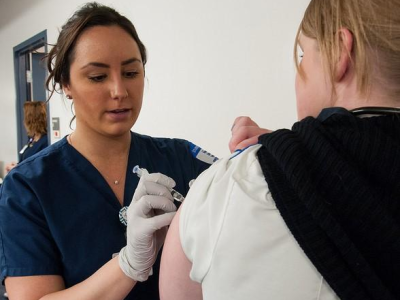Every dollar spent on Canada's Prison Needle Exchange Programs (PNEPs) saves an estimated $2 in treatment costs for hepatitis C and injection-related infections, supporting their expansion to all 43 federal prisons, Canadian and Australian researchers report today in CMAJ.
The authors developed a model to estimate and project costs to treat hepatitis C and injection-related infections under different PNEP scenarios in the prisons. Scenarios for 2018 to 2030 were no PNEPs, status quo (PNEP implementation from 2018 to 2022, with continuation to 2030), and PNEP expansion (coverage for injecting-drug users rising from 2025 to 2030, reaching 50% by 2030). The team calculated the benefit-cost ratio as healthcare savings divided by PNEP costs.
Canada 1 of only 9 nations with such programs
By 2019, Correctional Service Canada PNEPs were instituted in 9 of 43 federal prisons, with coverage reaching 10% of injecting-drug users in 2022. All new prison entrants undergo an intake assessment with a registered nurse and are offered the PNEP.
Inmates can apply for the PNEP any time during their sentence, and the warden decides whether to accept applicants on the basis of a threat risk assessment and input from the security intelligence officer and assistant warden of operations. Approved participants sign a contract and receive a syringe and needle, mixing cup, cotton filters, vitamin C, and sterile water, which they can exchange at Health Services.
The World Health Organization’s Global Health Sector Strategies for 2022 to 2030 call for the reduction of new hepatitis C infections to fewer than 2 and the distribution of 300 needles and syringes per person among injecting-drug users per year by 2030. But the authors noted that, as of 2023, Canada was one of only nine countries with PNEPs in at least one prison.
"Needle exchange programs are evidence-based strategies that prevent transmission of blood-borne viruses, reduce injection-related infections, improve access to medical care, and facilitate entry into substance dependence programs for people who inject drugs," they wrote.
Benefit-cost ratio of 2
Relative to no PNEP, the program was estimated to cost $450,000 (uncertainty interval [UI], $320,000 to $980,000) and prevent 37 (UI, 25 to 52) hepatitis C and 8 (UI, −1 to 16) injection-related infections from 2018 to 2030, for a benefit-cost ratio of 1.9 (UI, 0.56 to 3.0).
We estimated that expanding PNEP coverage to reach 50% of people who inject drugs in prison in all federal prisons from 2025 to 2030 would prevent an additional 15% of new hepatitis C and 8% of injection-related infections compared with the status quo.
Relative to the status quo, the PNEP expansion scenario cost another $2.7 million (UI, $1.8 million to $7.0 million) and averted 224 (UI, 218 to 231) hepatitis C and 77 (UI, 74 to 80) injection-related infections, for a benefit-cost ratio of 2.0 (UI, 0.57 to 3.3). Sensitivity analyses suggested that more economic benefits could be produced in prisons with a high hepatitis C incidence, longer sentence lengths, or higher rates of injecting-drug use.
"We estimated that expanding PNEP coverage to reach 50% of people who inject drugs in prison in all federal prisons from 2025 to 2030 would prevent an additional 15% of new hepatitis C and 8% of injection-related infections compared with the status quo," the researchers wrote. "Although more than 80% of the projected benefits were attributed to averted hepatitis C infections, severe complications from injection-related infections still contribute a considerable burden to the health care system."
1 in 3 inmates report recent drug use
In a related commentary, Benedikt Fischer, PhD, Elnaz Moghimi, PhD, and John Weekes, PhD, all with Simon Fraser University in Vancouver, British Columbia, said that incarcerated people in Canada are at higher risk of drug overdose and all-cause death than the general population, both in prison and immediately after release.
"The prevalence of substance use disorders among incarcerated populations has been estimated at 50% or more; in Canada, as many as 1 in 3 federal prison inmates reported in recent surveys that they had used drugs in the last 6 months while incarcerated," they wrote.
Without systematic expansion of and increased access to such programs, prisoners in Canada will remain at unnecessarily high risk of ill health and death from the adverse consequences of substance use.
Fischer and colleagues said PNEPs could be enhanced through the implementation of programming already available in the community, such as overdose-prevention sites and safer drug-supply programs that provide pharmaceutical-grade substances such as opioids via alternative delivery methods.
"Without systematic expansion of and increased access to such programs, prisoners in Canada will remain at unnecessarily high risk of ill health and death from the adverse consequences of substance use," they concluded.




















